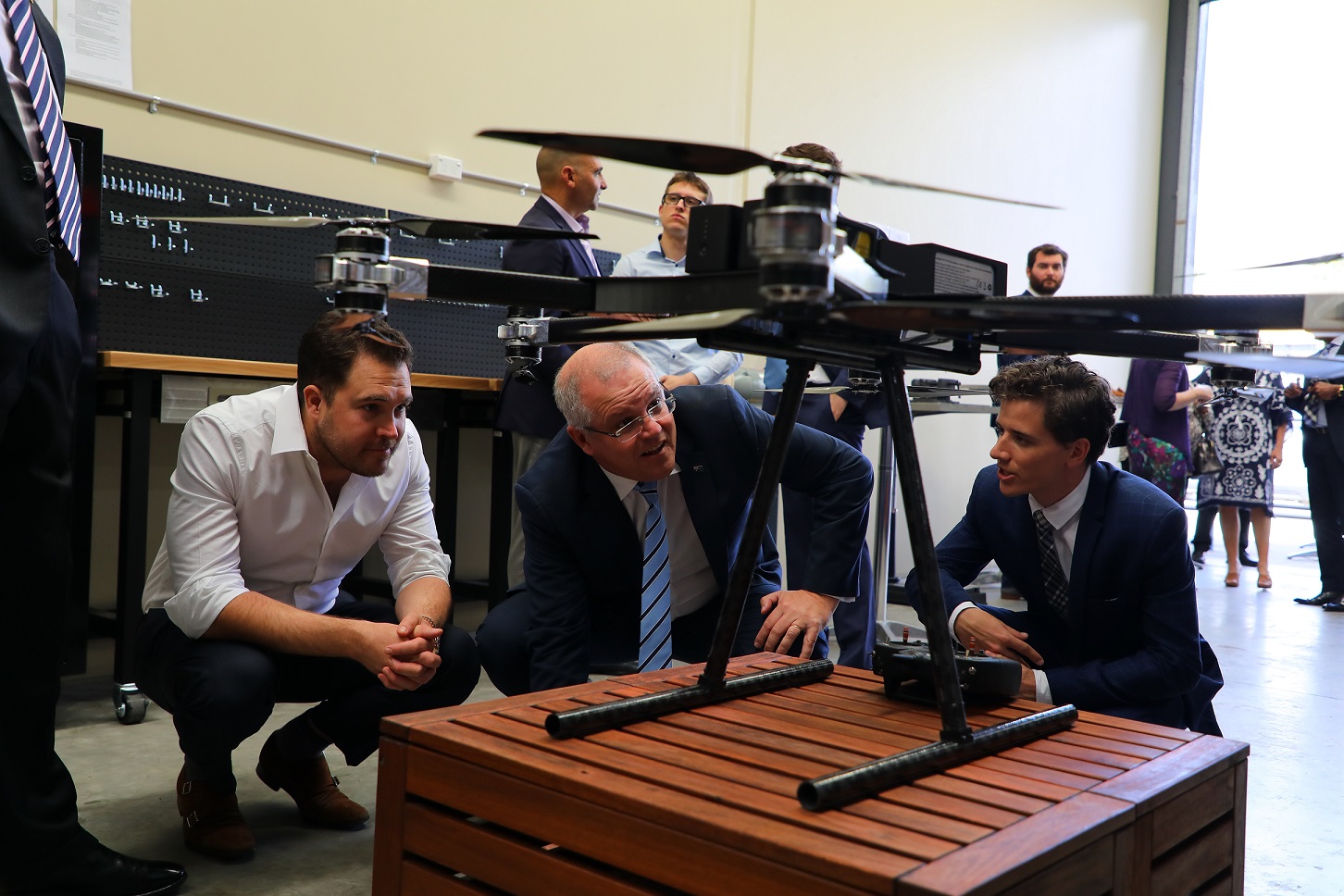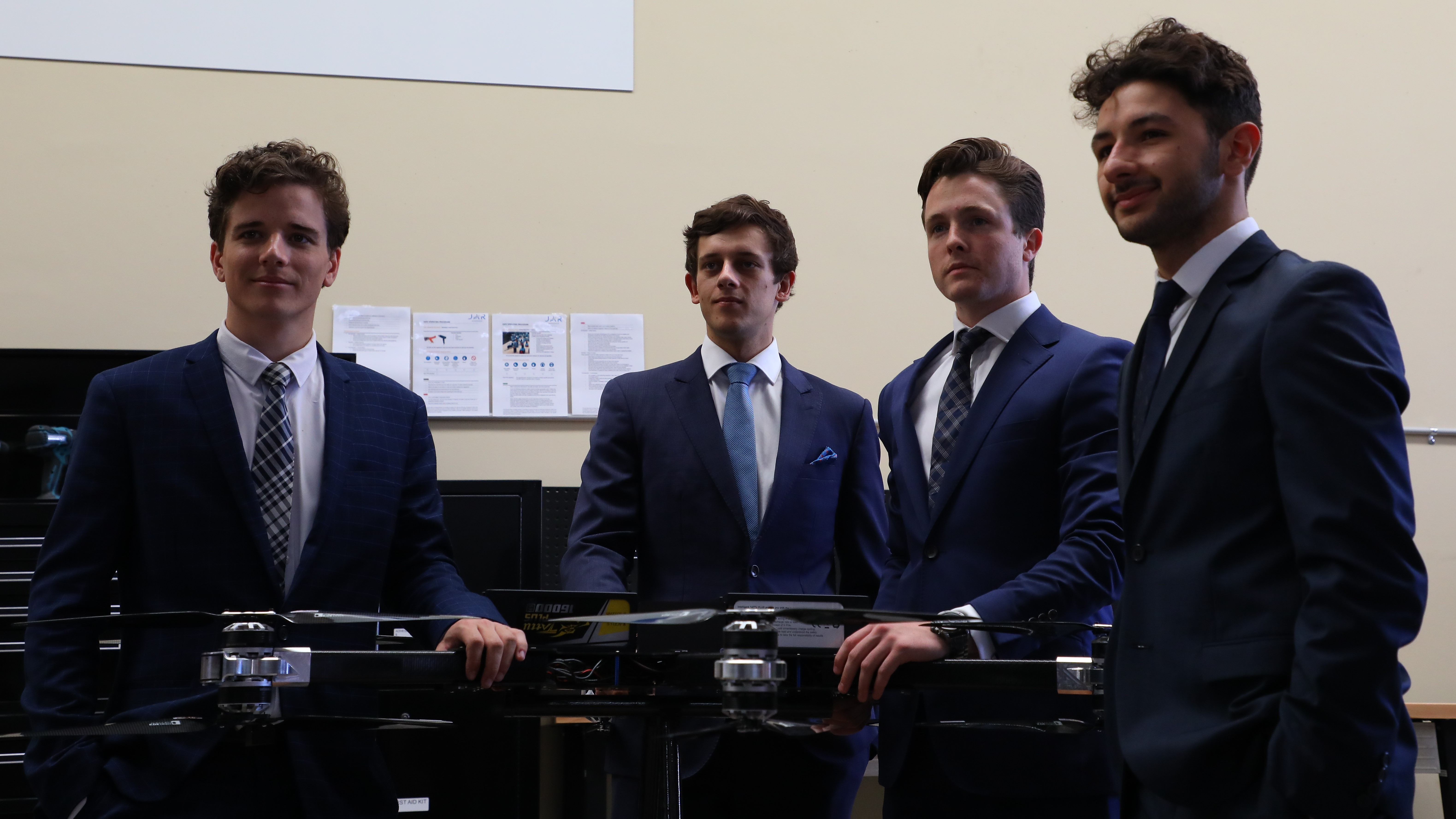#StartupSpotlight is a series on Information Age, shining a light on Australian start-ups disrupting the status quo.
From military combat to pizza delivery, the modern-day applications for drones and unmanned aerial systems are seemingly endless.
But for a group of friends in their early-20s, the goal is simple -- create the safest and most reliable drones on the market.
After spit-balling a few ideas at the tail-end of 2016, the team of four decided to put their money where their mouths were, incorporating JAR Aerospace in January 2017.
“We decided we had an opportunity at hand to enter into the recreational and photography drone market, with a solution to what we saw on the market as an issue, which was unsafe and unreliable systems,” said company CMO and Co-Founder, Lochie Burke.
After receiving its first round of investments from now Chairman of the Board, Tim Kennedy, the team quickly began to scale and look beyond the recreational drone market.
Mining, agriculture and construction are now among some of the fields JAR is entering into.
Growth and disruption
Originally based out of a garage on NSW’s central coast, the company was then given the opportunity to work out of the UNSW Innovation Incubator space.
JAR has recently upgraded again, opening a state-of-the-art manufacturing site in Caringbah in Sydney’s south late last year.
Like the headquarters, the team has also expanded, with JAR Aerospace now employing 23 staff, ranging from university undergraduates to PhD students.
Qualifications are somewhat irrelevant at JAR Aerospace, Burke explains, because when an industry is this young, experience is a relevant term.
“It’s such an infant industry. We have people working in our team who are PhD graduates and have multiple years of experience and are incredible minds, and we have collaborative partners of the same calibre who are very esteemed.
“We also have people who haven’t even graduated from university yet who have that dynamic mindset.
“Because it’s such an infant industry, you could almost say that neither of them knows more than the other.”
And while each staff might not know more than the other, they all know about disruption.
“Disruption is something we focus on every day, it’s the core focus of the engineering team.”

Federal Treasurer, Scott Morrison checks out a JAR drone.
It’s this mindset that has led the drone start-up to enter into the high-stakes medical field, developing a 12-motor, 6-arm, triple-redundant system.
The triple redundancy means there’s three of everything in case anything goes wrong, making it reliable enough for the journeys where there’s no margin for error.
“This system is ground-breaking in a lot of ways in its reliability, its performance and also its on-board intelligence,” said Burke.
“Basically, what we’re using this for is flying over populous areas to deliver pathology samples, blood and other medical supplies, from point A to point B.
“This has the potential not only to provide organisations with massive time and cost efficiencies, but also provide a genuinely lifesaving solution and medical accessibility to a vast range of people.”
Changing the landscape
As the name suggests, going into orbit is the end goal for JAR Aerospace.
“We want to be in space in the next five years,” said Burke. “That’s the goal of the company and that’s where we’re heading.”
However, understanding the skill level this will require of its future team has led the current members of JAR to question STEM education in Australia.
Rather than wait for change, it has created its own, launching JAR Education.
“We looked at the way we’d all been educated and our experiences through primary and high school, and even the experiences at university in the engineering field,” said Burke.
“We realised that if we wanted to redefine the Australian aerospace industry we had to first, to some degree, redefine the education space.”
The JAR Education Drone Integration Program focuses on design, hardware, software, coding and automation, while also ensuring that the content is aligned with current the syllabus.
As well as creating a future workforce capable of delivering Australia’s own SpaceX, JAR Education has helped the current team to challenge its own thinking.
“It’s helped all of our team continue to think adaptively and innovatively, because everyone in our team, all of our engineers are involved,” Burke said.
“There are also young kids that come in, none older than 15, that ask the most pressing questions and have the most incredible ideas that they don’t even comprehend.”










